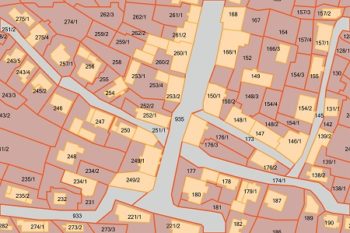
APN in real estate is the assessor’s parcel number. The county assessor assigns a unique one to each parcel of land in the area. Local governments use it to identify and keep track of land ownership for property tax purposes. There are several synonyms for it across the country:
- Tax Identification Number (TIN)
- Assessor’s Identification Number (AIN)
- Property Identification Number (PIN)
- Property Account Number (PAN)
- Tax Account Number (TAN)
Depending on where you live, your county assessor may use any one of these or even a different ID. They all refer to the same thing, though, and they have the same purpose.1
Click to Open Outline
Finding the APN for a Property
You find the APN for your property on the parcel maps of the county to demarcate property lines, tax assessments, exact location, and deed information. If you need to locate yours here are some things to do:
- Find out what it looks like – they contain at least 3 sets of numbers: map booking, it’s page and parcel.
- Look at your tax bill.
- Look on your deed – you should have a copy with your closing documents when you bought your home, or your county clerk has it recorded with your property’s title.
- Check the county assessor’s website – You can usually search for it with your name, address, and Tax ID.
- Ask your realtor – They have access to all kinds of property information. If you don’t want to take the time to look for it yourself, most will be happy to help.
Since the government uses this for tax purposes you can find it on tax and ownership documents associated with your home. If you have the APN you can use it to find the address and other information about a house.2
Getting Records With an APN in Real Estate
How is APN useful? If you want to find records online, you need it, because that is how most county clerks organize their records. If you know the parcel number you can find the tax, deed, and mortgage information for that property easily.3
How are records organized?
Tax assessors organize records by parcel numbers. They do this because over time addresses may change, and some land may not even have an address. However, every property does have a parcel number, and that is why zoning boards, tax assessors, and records offices use them. Most of the time the local clerk organizes these as follows:
- Book first
- Then the page
- Finally, the property
This system goes back to the time before computers when local jurisdictions kept everything in physical books. So, the book and page numbers actually refer to pages in a real book. They just carried the nomenclature forward into the digital age.
Why is APN useful?
APN is useful because it is the most precise land record. As mentioned before, addresses may change or not even exist, so different entities use it when they want to be very exact:
- The tax assessor wants to know who owns the property, and its value
- Appraisers use it to get the official dimensions and boundaries of the land
- Title companies get deed information from it
- Attorneys use it in transactions to make sure that the new deed is precise
As you can see there are many uses for this number. You should know it because it is the legal location of your property.
Final Thoughts on APN in Real Estate
APN in real estate is the most precise legal location of a property. It provides ownership and tax information. It also states the dimensions and boundaries. This is helpful if you think that a neighbor may encroach on your property. If you are unclear or there is a dispute about an aspect of your land then the parcel information in your county clerk’s office is the place to go to resolve it, and the parcel number is how you locate that information.
These records are local and very often quite old. What they are called varies greatly across the country. Not only that, but record-keeping also varies as well. If you are unsure what the APN is called in your local area, ask a realtor or just call your county clerk’s office and ask them.



